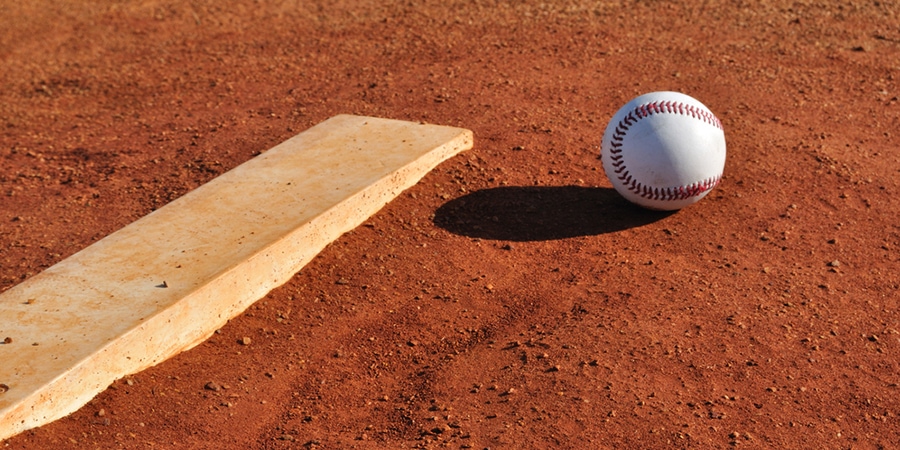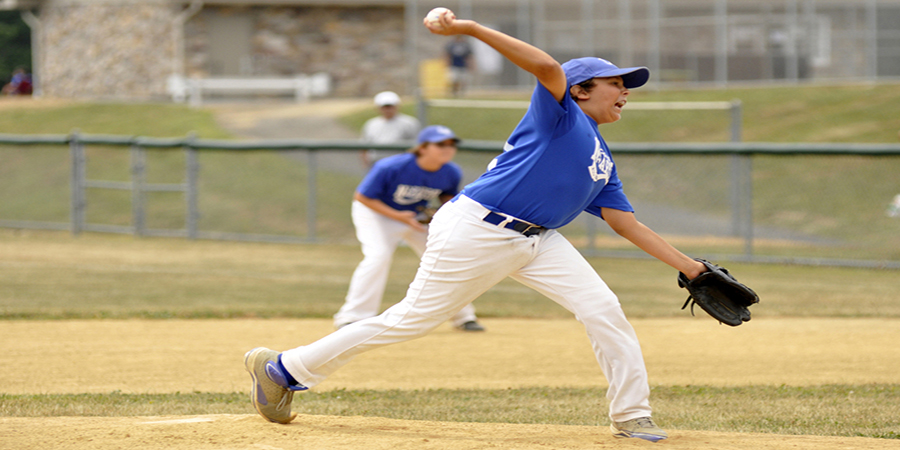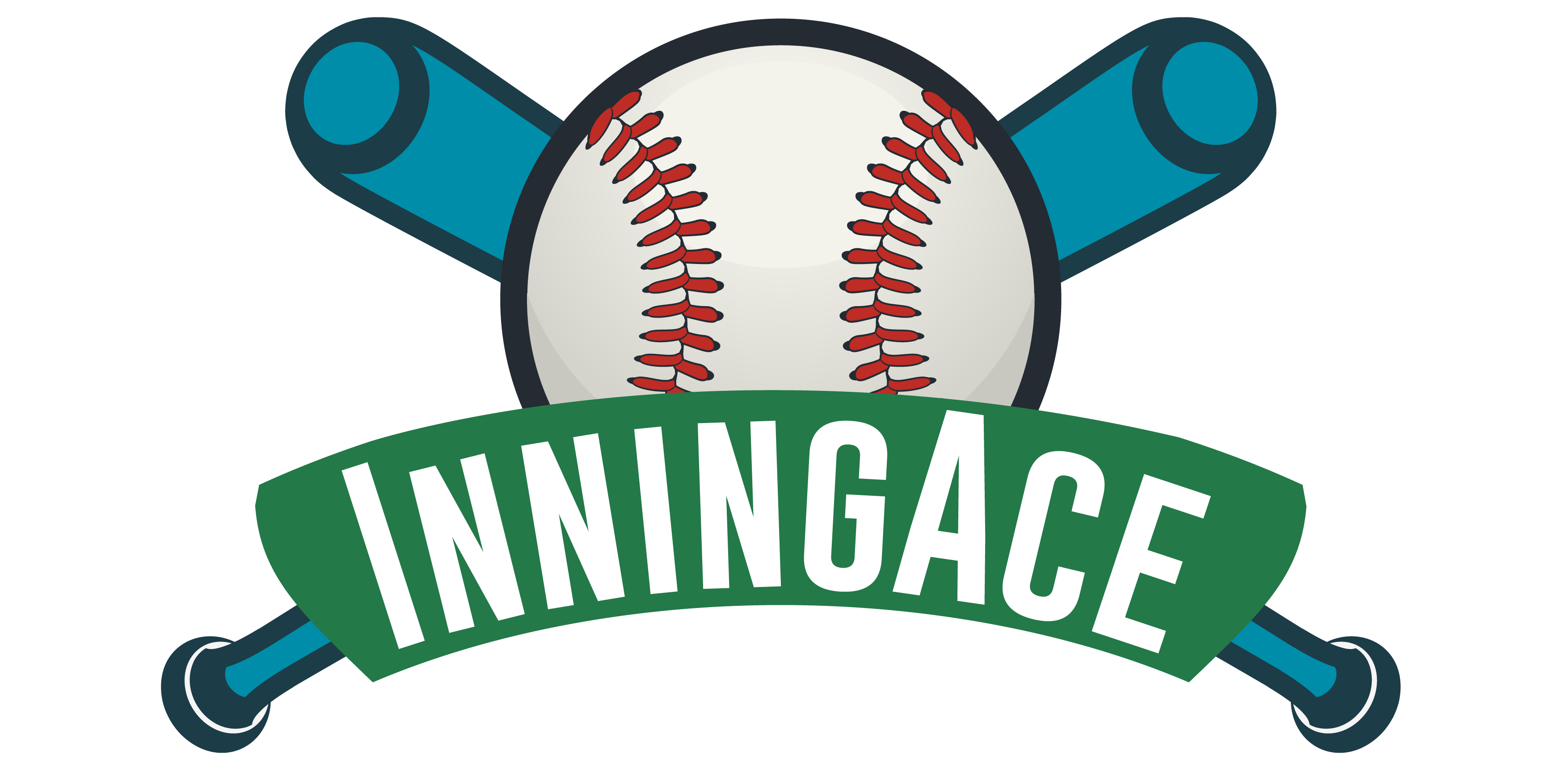With 6 divisions, the Little League baseball field dimensions change as distances between bases and from the pitcher’s mound to home plate increases as children get older. The Little League ages range from 4-16 years old. There are strict rules around the distance from the pitcher’s mound, as well as the size of the infield and the distance to the outfield wall.
In the Major League Division, the diamond is 60 feet around, while the outfield fence can be 200 feet from home plate. Compared to MLB base distance, Little League Baseball is 14 feet 6 inches shorter in distance.

According to Little League rules, the Little League pitching distance is 46 feet. In addition, the distance between the bases is for Little League age groups is 60 feet 6 inches. At the professional level, the baseball base distance is 90 feet, and the MLB pitching distance to the home plate is 60 feet.
The Little League baseball dimensions depend on the children’s age, and not only are the measurements there to help their performance, but also to avoid causing injury.
Why Should Kids Play in Little League Baseball?
Baseball Little League teaches focus, discipline, patience and as with any sport, requires children to commit and accept that some things need practice before being perfected. As well as this, it is a great community sport, bringing together families from all walks of life. Not only are children involved, but adults can get stuck in as well, supporting the community children and volunteering with games.
It is also a great way for children to have fun and make friends. They learn the value of healthy competition, and how to operate as part of a team. These are all skills that can be transferred to other areas of their lives as they grow up.
The Official Little League organization has a whole range of free training materials which can educate organizers. This includes The Little League baseball rules, educational resources, sample schedules, umpire books, operating manuals and catalogs, all aimed at helping structure and teach baseball games.
What are the Benefits for Kids Who Play in the Little League?
In today’s environment, children are overloaded with technology. Getting them outside and exercising in fresh air is a challenge most parents face. The key is to find a sport that not only gets kids moving but also motivates them and teaches them skills that can be applied to other areas of their lives.
In youth baseball divisions, kids don’t only learn how to swing a bat or throw a ball, they learn how to work and communicate as part of a team. This teaches them crucial communication and social skills, which many will take with them into adulthood.
They exercise their muscles from a young age, slowly increasing in fitness as they move up Leagues, and throughout this exercise, they learn patience. Being a great baseball player doesn’t come instantly, so this is a great way for children to learn the importance of practice and determination.
Health Benefits
Baseball teaches children to become in tune with their bodies. As they progress in the sport, their coordination skills improve, as do their reflexes and concentration. As well as the obvious exercise benefit, practicing baseball regularly also enhances their mental focus.
Increasing mental focus will naturally benefit them in school, it can help with behaviour issues and sleeping routines. Alongside this, the fact that baseball is such a social sport, and children thrive off being part of a team means regular sport practice increases mental health well being.
Check this video out:
What are The Health Risks of Playing in Little League Baseball?
Muscle strain is a common injury that can affect baseball players of all ages. Pitching counts are always monitored, as a way to keep record should a player obtain an elbow injury.
Poor throwing can also play a part in causing injury to the arm, especially in younger players whose ligaments are not fully developed. The curveball technique being taught at a young age is also a controversial topic, as some physicians believe it can cause damage if done repeatedly.
What are the Field Dimensions of the Little League Diamond?
Little League field dimensions will vary depending on which league will be using the facility. The Official Little League fields specification state that for ages 12 and under, the typical base path distance is 60 feet while older groups can have a length of up to 90 feet.
In The Junior Division for players aged 12-13 years, the distance from the pitcher’s mound to home can be as far as 60 feet 6 inches. The 50/70 baseball division is for regular season play.
In the 50/70 category, the baseball diamond dimensions change the distance from the mound to home plate to 50 feet, and the base paths are a maximum of 70 feet. In addition, the pitching mound dimensions increase in distance. The home plate to the outfield fence increases from 200 feet to 300 feet.
In a standard baseball field layout, the distance from the pitcher’s mound to home plate is 46 feet, and 60 feet 6 inches from base to base. The outfield fence is 200 feet from home plate.
What are the Age Groups for Little League Baseball?
Here are the leagues set out according to age:
Ages 4-7 Tee Ball League
This should be the foundation for kids to learn baseball skills. It is during this stage that kids can start to understand the game, rules, positions, and fundamentals of how to play well. Starting at a young age means children learn through playing and having fun, rather than through rigid routine and training. By teaching kids throwing and basic fielding at this age, they’re being set on the right path should they wish to pursue baseball into more competitive levels in the future.
Having parents on board, whether it be through volunteering or coaching, can encourage kids and promote their love for the sport. Prior experience isn’t needed as long as there is plenty of enthusiasm to pass down.
Ages 5-11 Minor League
It is during this level that children develop their fielding and throwing skills. It is important to get kids used to have balls flying at them, as many may suffer from anxiety over being hit and injured. Through lots of practice, children start to realize that they have a role to play and can exercise their control over the baseball.
Alongside this, their fitness levels are increasing. They start to become aware of their hitting abilities as well as their throwing movements and start to identify what is done correctly and what isn’t.

Ages 9-12 Major Division
This is where kids are taught higher player functions. Actions such as stealing bases and hitting faster pitches, as well as learning how to strategize and field balls. Coaches use more comprehensive drills, using lots of repetition to embed skills such as batting.
This is done to show children how improvement and progress can be made through repetition. By this point their fitness levels have increased, even more, resulting in their pitching and hitting improving.
Ages 12-13 Intermediate Division (50/70)
During this division, practice and drills start to become more challenging. The field is made larger, and practice will include simulations of older players and in some cases, of professionals in the Major League. Children will be encouraged to watch professional baseball games, to study the techniques players use in hitting, fielding, and pitching.
Pitchers are expected to have more overhead movement and throw more pitches, with the goal of their velocity being faster. They will start to be put into real game situations, such as dealing with fast hit ground balls.
As their bodies have developed further, drills become more challenging and they are introduced to new concepts. Focus is put on how to use parts of their body necessary to swing with power. All the years of prior skill learning are now to be put to use.
Ages 12-14 Junior League/ Ages 13-16 Senior League
In the Junior and Senior League, the speed of the pitches should be around 65 miles an hour, with some even throwing at a higher velocity. Batters must be able to focus on the ball, swinging with speed and power. It is during this League that parents should find out how well their child has progressed by having conversations with the coach. By doing so, parents can try to fill any gaps, perhaps an area in which the child needs practice, at home or in between games and practice.
During these ages, true talent can be spotted. For some teenagers, coaches and parents will start to encourage playing baseball in high school and college. The Little League World Series ages range from 12-14 years old.
FAQs
What is the Pitching Distance in Little League Baseball?
The official Little League pitching distance is 46 feet. The baseball base distance is 60 feet. The distance between the pitcher’s mound and home plate varies between 35 and 43 feet depending on the Little League divisions and ages. In comparison, the Little League softball pitching distance is 40 feet and the distance between bases in softball is also 60 feet.
How Far is the Pitcher’s Mound for 8 Year Olds?
The Little League pitching distance for 7 and 8 year olds is 42 feet from the home plate. The benefit of having a shorter distance means children are able to throw more strikes.
What is the Pitching Distance for 10u Baseball?
The diamond used is a 60-foot diamond and the baseball pitching distance is 46. The distance between bases in baseball for 10u is 60 feet apart. The Little League softball field dimensions for 10u require pitchers to throw the ball from a distance of 35 feet.
How Far is the Pitcher’s Mound for 9 Year Olds?
Children between the ages of 9-12 partake in the Major division, As with the Minor League, this division requires a 60-foot distance between bases and a baseball pitching distance of 46 feet.
Updated on
